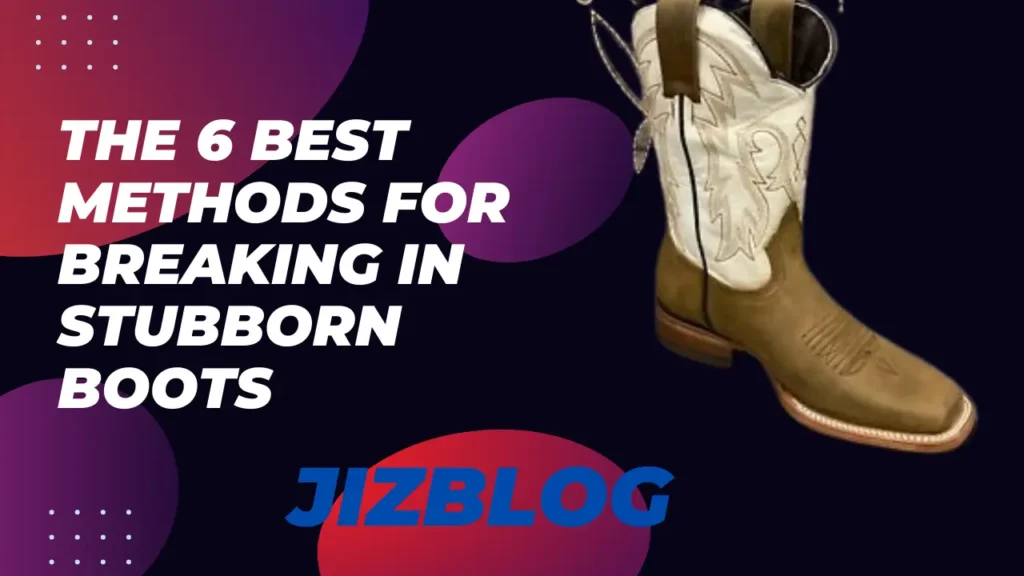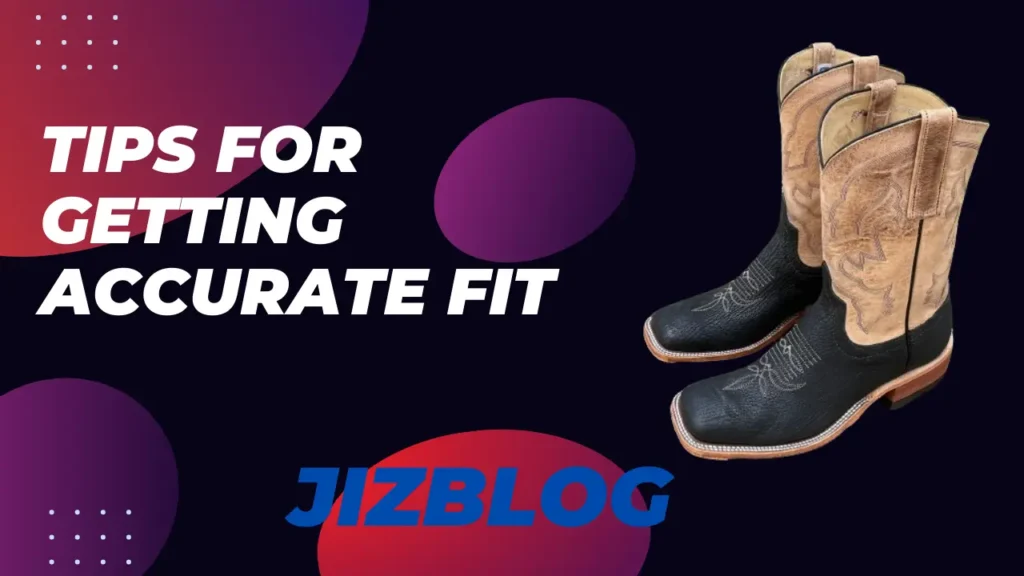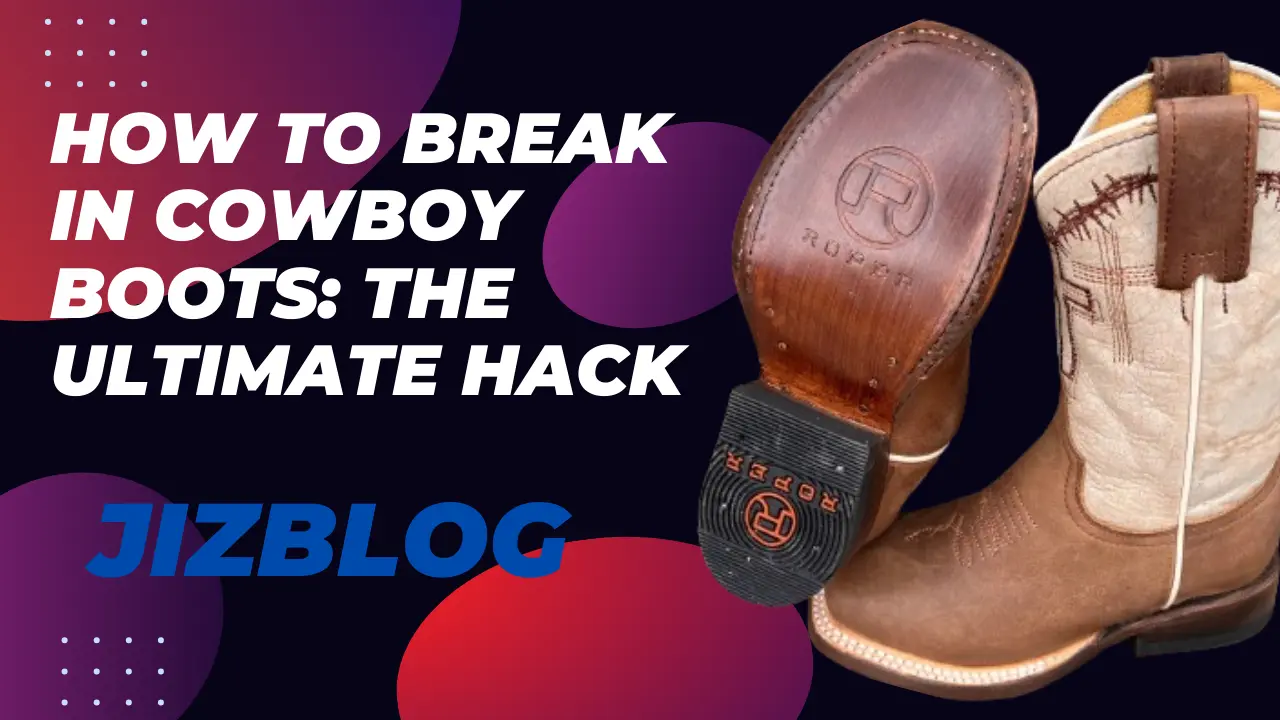Hey there boot buddies! So, you just got yourself a shiny new pair of cowboy boots, but breaking them in feels like breaking in a wild bronco? I’ve been there, and let me tell ya, it’s a bit like wrestling with a tumbleweed at first. But fear not, my friends, because today we’re gonna chat about “how to break in cowboy boots” the easy-peasy way.
Picture this: my first pair of cowboy boots felt like I had two wooden planks strapped to my feet. Ouch! But, no worries—I’ve got some tricks up my sleeve that turned those stubborn boots into pure comfy bliss. So, grab a seat, and let’s talk about making those boots your new best friends.
Why Properly Breaking In Boots Matters
Uncomfortable cowboy boots lead to misery. If you’re actually working with livestock, poorly fitted boots can even cause accidents. There’s nothing funny about getting your foot caught in a stirrup because your slick new Ariats are pinching your pinky toe.
Blisters and friction rubs also raise your risk for infection, especially with all the muck you’re stomping around in. Blood blisters hurt like the dickens and take extra time to heal.
By properly breaking in your boots, you’ll save yourself pain, and injury, and compromise the structural integrity of quality leather. Well-worn cowboy boots should fit like a second skin.
The 6 Best Methods for Breaking In Stubborn Boots

Stuff with Ice Packs Overnight
This trick comes straight from lifelong cowboys. It’s the fastest way to stretch leather safely without damaging it.
Simply fill sealable plastic bags with water and place them in the toe box snugly. Cram the rest of the interior with towels or socks to hold bags in place. Put the cowboy boots in the freezer overnight or for up to 24 hours.
As the water freezes and expands, it will stretch the leather out painlessly. Don’t leave them in too long though, or they may get too loose.
Effectiveness: 5/5 stars Difficulty: 2/5 stars
Table: Average Break-In Times by Boot Material
| Boot Material | Average Break-In Time |
|---|---|
| Cowhide leather | 1-2 weeks |
| Ostrich leather | 5-7 days |
| Alligator leather | 7-10 days |
| Eel skin | 3-5 days |
| Bovine leather | 2-3 weeks |
Wear Boots for Short Periods with Thick Socks
quality wool socks provide padding and protect against blisters as you walk. The extra bulk also applies pressure to stretch tight spots.
For best results, wear your cowboy boots around the house for a few hours a day with thick booted socks like these from Camel City Wool Mill. Take stairs slowly and emphasize flex points.
Effectiveness: 4/5 stars
Difficulty: 1/5 stars
Table: Break-In Methods by Effectiveness and Difficulty
| Break-In Method | Effectiveness (1-5 stars) | Difficulty (1-5 stars) |
|---|---|---|
| Freezing | 5 stars | 2 stars |
| Wearing with socks | 4 stars | 1 star |
| Boot stretcher | 5 stars | 1 star |
| Steaming | 4 stars | 2 stars |
| Conditioning | 3 stars | 1 star |
| Hand bending | 2 stars | 1 star |
Use a Boot Stretcher and Shaper
These tools are exactly what they sound like —inserted into the boot interior and manually expanded to stretch to your desired size incrementally. Use for 10 minutes daily after initial wear.
Wooden stretchers with a spring coil mechanism work best. Oval cross-sections stretch width, while U-shaped stretchers also elongate length.
Effectiveness: 5/5 stars Difficulty: 1/5 stars
Soften Leather with Steam
Heat and moisture make even the toughest leather supple. Carefully direct steam from an iron or kettle into each boot for 10-20 seconds max.
The interior should feel warm, not scalding. Slip them on immediately after steaming while the leather is still pliable to maximize stretch.
Be warned: Excess moisture can warp leather irreparably. Erring on the side of caution here prevents damage.
Effectiveness: 4/5 stars Difficulty: 2/5 stars
Rub in Leather Conditioner
Leather conditioners reintroduce those essential oils lost during the tanning process. This keeps materials hydrated and flexible while preventing cracks.
Gently massage conditioner into the full exterior of boots using small circles. Pay extra attention to flex points and lining. Let fully absorb then buff shine with a horsehair brush.
Effectiveness: 3/5 stars Difficulty: 1/5 stars
Bend the Boots by Hand
After initial wear, creases will emerge indicating natural flex points. With boots off, manually bend the upper along these creases to reinforce the shape. Apply pressure to the heel and toe as well.
Do this regimen daily while relaxing on the couch. The controlled flexing mimics wear without friction damage. Pair with steam or conditioner for added impact.
Effectiveness: 2/5 stars Difficulty: 1/5 stars
Avoid These Common Mistakes
- Don’t submerge your boots fully in water. It may permanently shrink leather.
- The heat from blow dryers can severely dry out and crack the leather.
- Trying to wear rigid boots for prolonged periods right away leads to extreme blisters.
- Daily wear doesn’t allow sufficient drying time between uses for moisture and sweat.
How Long Does Break-In Take?
With consistent yet reasonable wear and targeted stretch techniques, most quality leather cowboy boots fully break in within 1-2 weeks.
Budget “fashion” cowboy boots may never truly feel like custom boots, but they should soften adequately after 20-30 hours of wear.
Of course, individual factors affect break-in time too, mainly…
- Boot Leather Quality Cowhide, ostrich, alligator, and eel skin boot leathers break in faster than bovine leathers due to natural supple textures.
- Construction Style Double stitched boots with exaggerated arched soles take longer. Minimal flat-soled boots break in quickest.
- Wearer Foot Type
Those with exceptionally high arches or wide feet do well to size up initially for a shorter break-in period.
Tips for Getting Accurate Fit

Improper sizing accounts for most discomfort and blisters when breaking in cowboy boots. Boots should fit snugly out of the box, with enough room to slip a finger behind the heel (about a half-thumb’s width).
When trying on boots, wear similar thickness socks to those you’ll wear in action. The width should comfortably allow wiggle room for toes when standing. Heel slippage indicates boots are too big.
Consider custom boots if you fall between standard sizes. They’re well worth the investment, last decades, and require negligible break-in time.
Don’t forget to consider shaft height based on calf thickness to prevent uncomfortable rubbing. Measure calf circumference to determine the best height.
Ready to Saddle Up in Style?
As you can see, breaking into cowboy boots properly doesn’t require Herculean strength or unbearable pain. Anyone from working ranchers to urban cowboys can utilize these methods to enjoy custom-feeling, blister-free boots in no time.
Just remember: patience, precision, and care for the leather makes all the difference. With that cowboying mindset, you’ll have those boots fitting better than your trusty Stetson in a week or two.
So grab your conditioner, coziest socks, and stretcher. It’s time to put some sweat equity into crafting your perfect pair of cowboy boots. Just don’t be surprised if you get so attached you never want to take them off!
Conclusion
As you can now see, cracking the code on how to break in cowboy boots doesn’t require extreme measures or unbearable pain. With a few simple tools and consistent yet careful wear, those stubborn leather shafts and toes will soften right up. Just be sure to care for the material properly while you work to avoid damage. Before you know it, you’ll have a custom-feeling pair of cowboy boots to swagger around in for years to come. So grab your stretcher and socks, and get ready to saddle up in style!
FAQ’s
What’s the quickest way to break in stiff cowboy boots?
Freezing cowboy boots overnight with ice packs stuff in the toe box is the fastest safe break-in method.
Should cowboy boots be tight when new?
Cowboy boots should fit snug out of the box, with enough room to slip a finger comfortably behind the heel.
Can you wear brand new cowboy boots all day?
Avoid prolonged wear of rigid, new cowboy boots to prevent painful blisters; break them in with gradual short periods of wear instead.
How often should you condition cowboy boots?
Condition cowboy boots every 3-6 months to keep the leather supple and prevent cracking or drying out.

